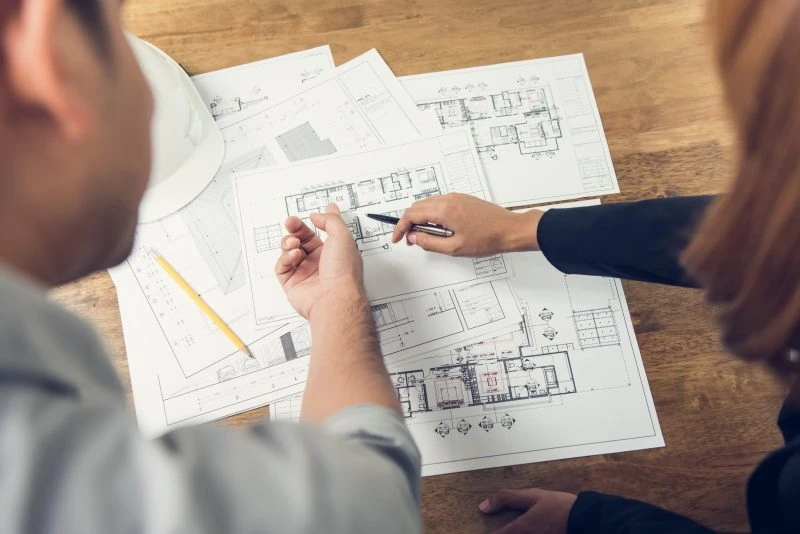Once the design development phase is complete, it’s time to move on to step three in the architectural design process: creating the construction documents.
Construction Documents Purpose
The construction documents represent the completed design for the project. They are submitted to the city for any required permitting, and the final versions of these documents will serve as the basis for the next phase of the process, bidding, in which contractors and other professionals present their cost estimates and proposals for your project. The construction documents will eventually become the guideline for the construction phase of the project.
Construction Documents Decisions
Because most of the decisions have been made during the schematic design and design development phases of the project, there are usually few major decisions to be made during this phase. As your architect finalizes the documents, she may return to you for questions about details if they haven’t been fully addressed during earlier phases.
It’s possible that the permitting process will raise new questions or uncover issues that need to be addressed. Your architect will consult you for any decisions that need to be made as a result.
Construction Documents Tasks & Deliverables
During this phase, your architect will be hard at work creating drawings, submitting documentation for permits and consulting with other experts, if necessary, to develop a set of documents that will represent the final plan for the project.
The documents the architect submits to the city will provide all the information the local building and planning department needs to issue permits. Your architect will also complete a set of documents that contain everything the contractors need to know to build the project.
These include:
- Demolition plans
- Site plans
- Floor plans
- Exterior and interior elevations
- Section drawings
- Interior and exterior details
- Landscape plans
- Foundation plans
- Roofing plans
- Mechanical systems plans
- Finish plans
- Accessibility notes & safety plans (for publicly accessible buildings)
These plans will include structural drawings, mechanical drawings, plumbing and electrical drawings, as well as schedules of materials and details such as finishes, paints and other decorative elements.
Costs
As with other phases of the architectural design process, your costs during the construction documents phase will depend on your contract with the architect.
You will likely be required to pay for any permits your city requires at this time. If your project involves the renovation of an existing structure, you may find that you owe penalties on any previous work that was not properly permitted at the time it was done. (Your architect will try to advise you if she thinks this will apply to your project.)
California also requires you to submit a Title 24 report verifying that your design meets the state’s energy standards. Your architect will prepare and submit this report, which you will need to pay for. The cost typically ranges from a few hundred dollars for a residential remodeling project to several thousand for a new commercial building.
Depending on the details of the contract, there may be a payment due to the architect upon delivery of the final documents.
Once the construction documents are complete and the necessary permits are pulled, you and your architect will move on to the next phase of your project: putting it out for bidding and selecting the contractors who will build it.
This post first ran in 2019.


